If you are thinking about how to start a successful blog or create a personal website, you are in the right place. No matter the topic or the niche of the website, these easy steps will help you create the best possible blog.
We started our travel blog in 2015 after a year of traveling around the United States in a van and moving to Ecuador. We started our website to share our travel experiences and information we learned throughout our adventures.
It was not until mid-2016 when we learned what it takes to make a website successful and now we want to share all those tips with you. In this guide we will share how to set up your blog, where to buy your domain and hosting and of course how to get traffic to your blog.
Before anything you need to realize that having a successful travel blog requires a lot of time, effort and hard work. In this guide we are sharing some of the strategies will learn along the way and will help your website perform better and attract a larger audience.
How to start a blog?
Finding the right niche


It is super important that before you start building your website or buying your domain you define your niche and from there you can more easily define your audience. To determine what you want your niche to be you need to dig deeper in your interests, passions and what topics you can be an expert about. Everyone is passionate about a specific topic, you just need to find yours and the easiest way to start is by asking yourself “why do I want to start a blog?”
For instance, if you are interested in travel; that is a good start point, but to get your niche you need to think deeper. For example do you travel with dogs? Do you travel as a couple? Are you more luxurious or budget focused?
In our case we love traveling, we are a straight couple with 2 chocolate labs; So, we try to focus our content on creating pet friendly guides, romantic getaway guides, walking guides and itineraries. We tried not to have a too narrow of niche as we cannot always travel with our dogs or together, so we produce a range of content based on our expertise and what we feel comfortable doing.
Defining your audience




Once you have established your niche, make sure it is a topic you enjoy writing about, as the ultimate goal is become an expert in this field. From here you have to determine your audience. This is important because then you can tailor your content based on your readership and who will be interested in reading it.
A good way to narrow down and established your readership is by asking yourself “Who is my target audience?” and “Who would be interested in what I have to say?” This will help you craft the right content for your audience and write for them. Think beyond the general age, gender, language, and location of your audience. In the case of travel, a good question is your audience regular travelers or plan all year for one big budget trip. Try to think outside the box, to ensure you create the best content for your audience.
Once, you know your audience search for potential competitors by searching on Google. When browsing competitor sites, look for holes in the information and how you can improve the content to provide a better and more complete experience to the same audience. In any market there are always ways to improve and innovate, you need to bring the best solution to a problem to distinguish yourself and your brand.
Choosing the name for your blog
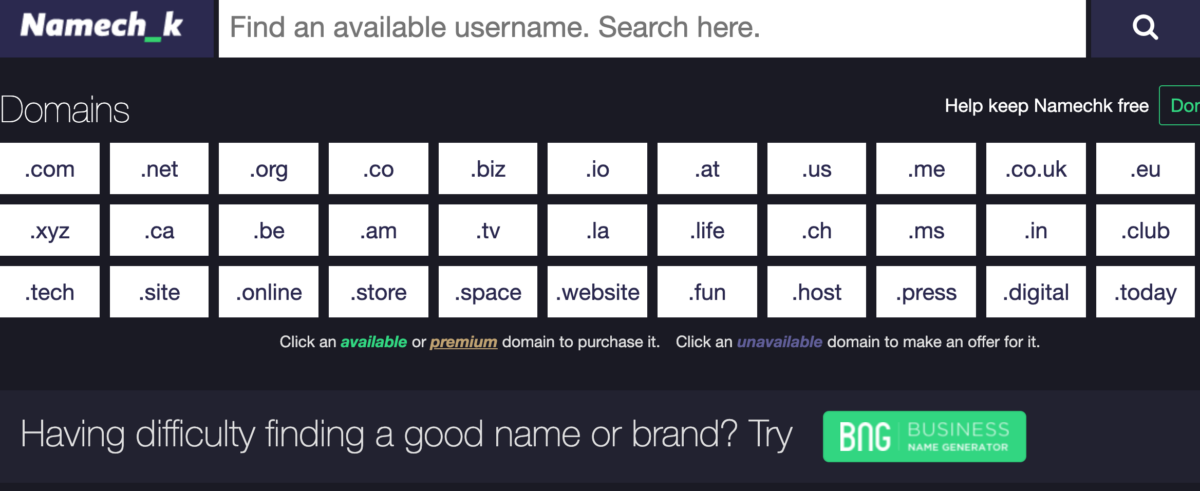

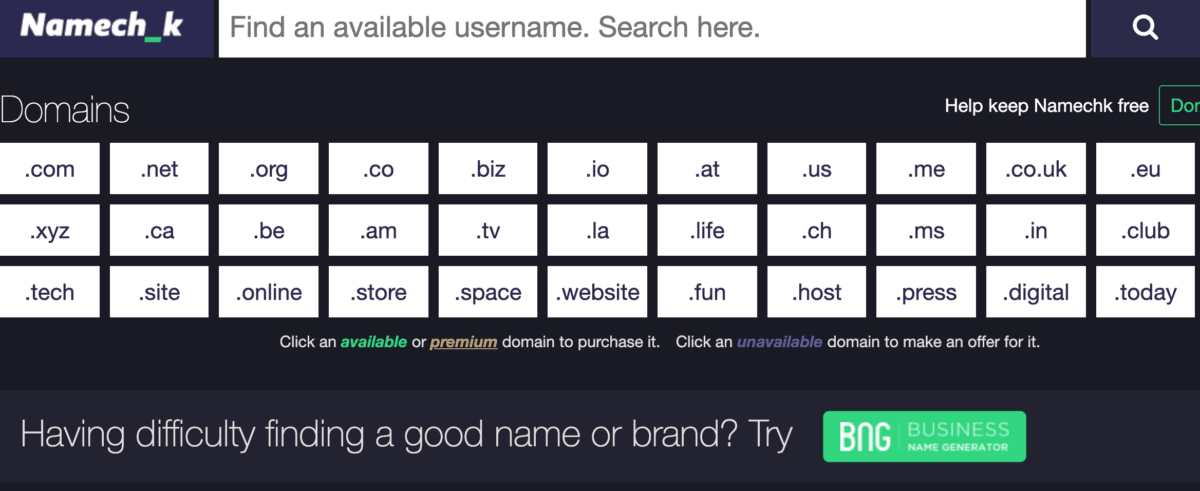

Today, it is harder than ever to come up with a name for your online brand, as there are so many existing websites. But harder does not mean impossible. I always recommend to think out of the box and remember to not be too specific so you can always branch out the types of content in the future.
Try to keep the names timeless and relevant as well as something memorable and that resembles you. You want something that is good today but will also be good tomorrow and the day after. For example: The20YearOldBlogger.com does not work so well, since you are going to be 30 years old at some point.
When choosing a name, think of something unique nut at the same time is also easy to remember. One special note is to avoid commonly used terms that might sound great, but poses problems when it needs to be written.
Even with the name Travel To Blank, someone might type Travel2Blank or TravelTwoBlank, since it all sounds the same. If people often misspell your name it might be too complex to use as a blog name.
Once you come up with some naming ideas for your blog, ask some friends or family to write out the name to see how easy it is to spell correctly. You might even want to consider how the name sounds in a different accent or from a speaker of a different language for when you become an international blogging sensation.
When we were living in Ecuador we sold baked goods out of our kitchen and landed on what we thought was the perfect name, Shalom Cake. Two easy words to pronounce and spell in English. But, in Spanish nobody could figure out how to spell the brand or even pronounce it, most read it as Chalom Kakayy. We really missed the boat on having the brand name fit our audience, but we had already bought and built a website and logo before figuring this out.
One thing we quickly realized when testing name ideas with our family was not to use any special characters in the website or username that can make it harder for people to find your page. This can be a “-” in a domain name or a “.” in an Instagram username. If you say your website is travel dash home dot com, you can easily lose half your visitors to traveldashhome.com. This is a big problem if it is a competitor’s website, otherwise you will just have to pay for multiple domains.
While new Top Level Domains (TLDs), think .com or .edu or .org are coming out every year, most people’s default in the United States is .com. Someone will just write www….whatever…com, so it is best to have that for your website as well. As with the previous paragraph, if the .com version of the website name is not available that just gives your audience another chance of ending up on a competitors website.
By this point you might already realize how much thought has to be put into finding the right blog name, but remember it is not something that needs to be finalized in one sitting. It took us two weeks and over 100 ideas before figuring out the name for our blog.
In our case, it was super hard to find any of our ideas with an available username, as it seemed like anything related to travel was already taken. You want to have synergy across all online platforms and avoid using different usernames in social media accounts and the website domain. When coming up with name ideas use this simple username checker tool to make sure it is available across the internet.
After hours of ideas for blog names that did not pass the username check we went back to the drawing board. It came down to our origins, our audience and the type of content we were writing. Our inspiration ultimately came from how we were traveling in Ecuador at that time. We never had plans on where we are going next, how we are going there and when will be traveling. We were excited to travel and we had the time, but for as for destination we started out with a BIG blank. That is when our name was born “Travel to Blank”.
As we mentioned before it is VERY important to make your brand timeless and think about how your blog and brand can evolve in the future. Be careful and understand that you want to be open to new ideas later on the road, so your blog name has to grow with you.
Whatever name you end up choosing will be good for you, do not worry if you don’t think it is perfect at the end people will remember you for your content and not only because of your blog name.
Creating your website




Now, that you know your audience, the type of content you want to write about and have a blog name it is time to start building your website. Although your website might not become the highest earning among other social media platforms, a website will remain yours, while social media platforms come and go… remember Myspace or Vine or Google Plus? Here we will cover the step by step instructions on how to set up your blog on WordPress.
The first thing you need to know about creating your personal website or blog is that you need both hosting and a domain. To make it easier for newcomers we often make the analogy that the domain is the address to your home and the hosting is your physical house.
A domain is the URL to your website, in our case, www.traveltoblank.com Web hosting is a space that you rent on the internet to hold all of your content. Both of those are sold separately or as a package and you have to pay a monthly/annual fee.
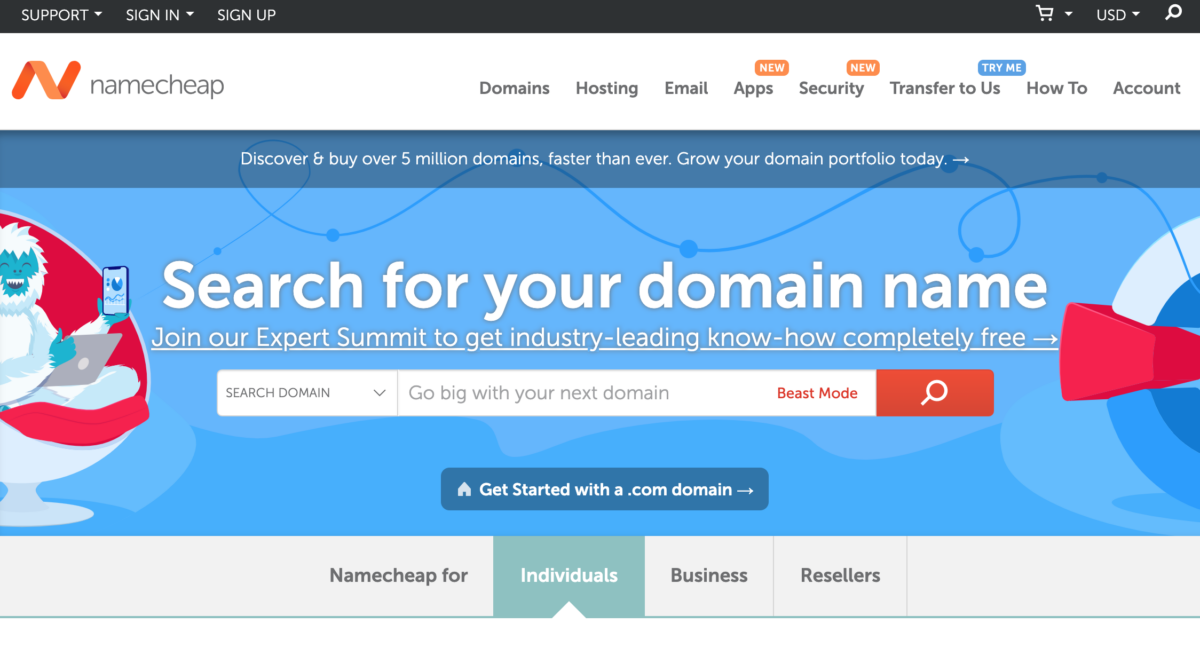

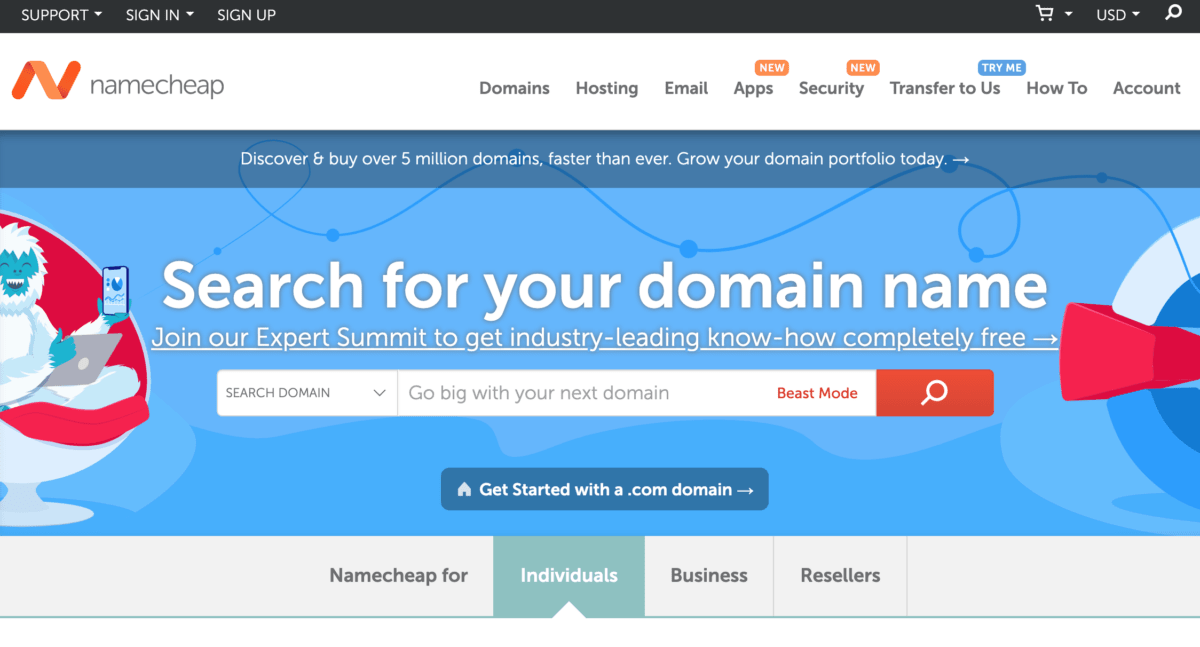

We buy the domains and hosting for our clients either on namecheap.com or on Bluehost. Both companies have amazing customer support, easy set-up guides and are a user friendly web host.
If this is your first blog and you want to get started without a huge investment, it is best to go with the cheapest plan of $2.95 a month and once you start having more traffic then you can upgrade your plan.
If you start out with the Basic Plan from Bluehost then you will have the option to either buy your domain with them or transfer one you already own. In case you have already bought a domain, make sure to check the name and avoid spelling mistakes.
After that you will be presented with a range of extras that the hosting provides at an additional cost. None of these are required and there are often alternative options that are better priced. Make sure to uncheck those add-ons before continuing.
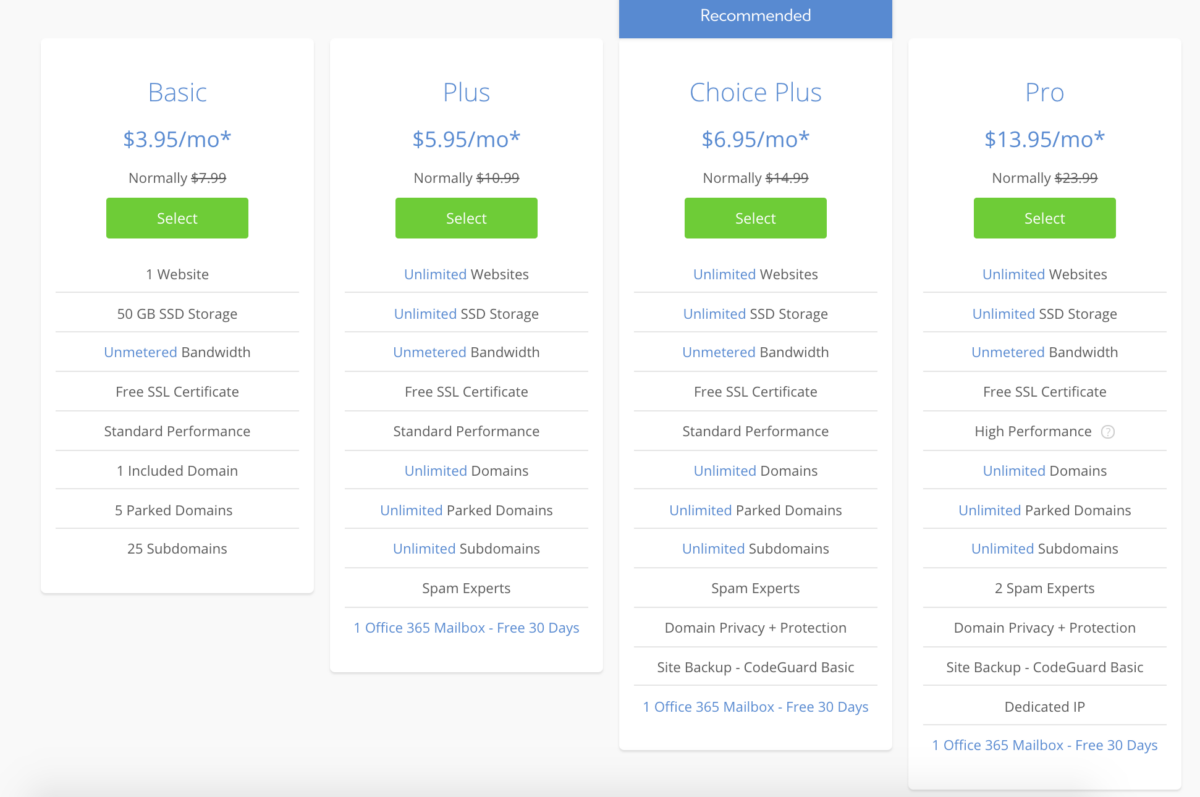

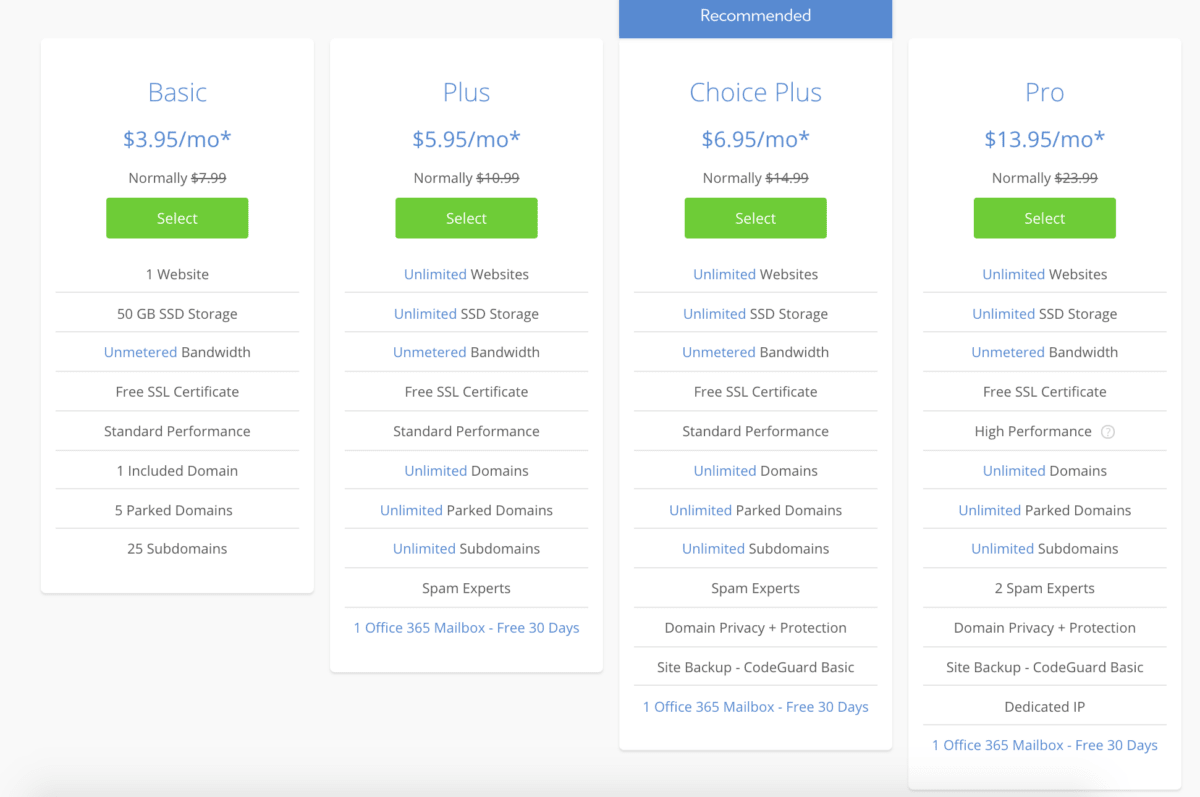

We recommend starting with the Basic 36-Month Plan, as you will be paying $2.95 per month, rather than $5.95. You will only receive this introductory price on your first purchase, and are able to get a prorated refund on your hosting if you want to switch before the end of your pre-paid term.
Now that you have everything you need let’s start working on your website.
Set up your website on WordPress
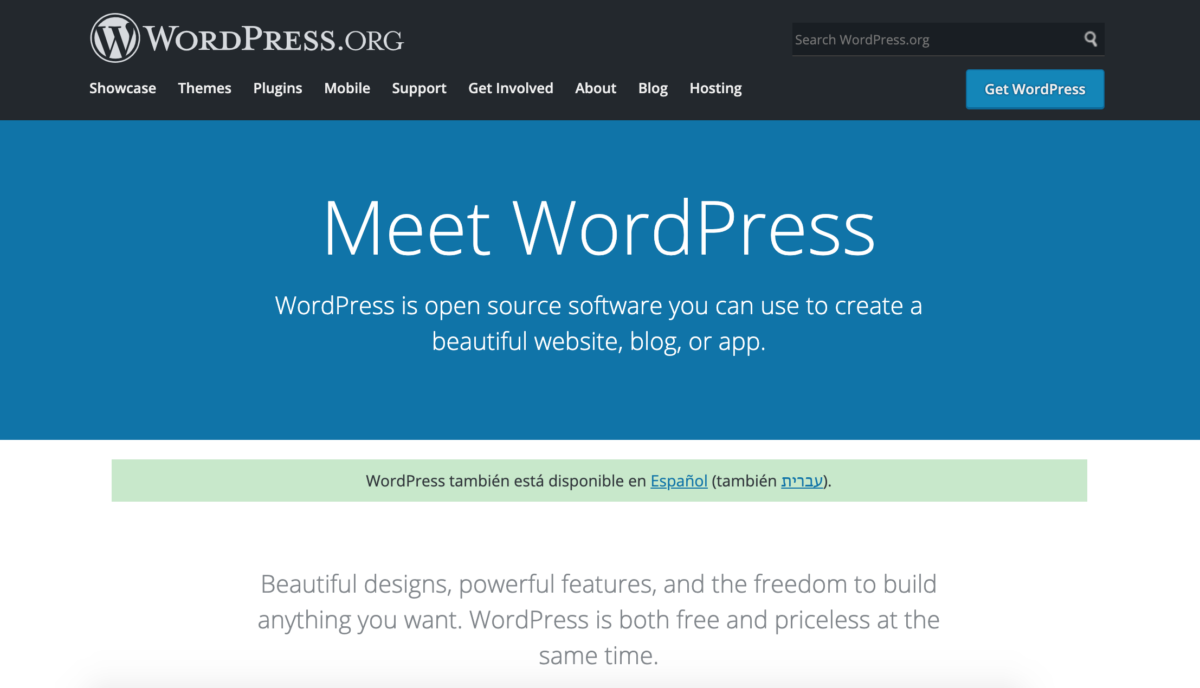

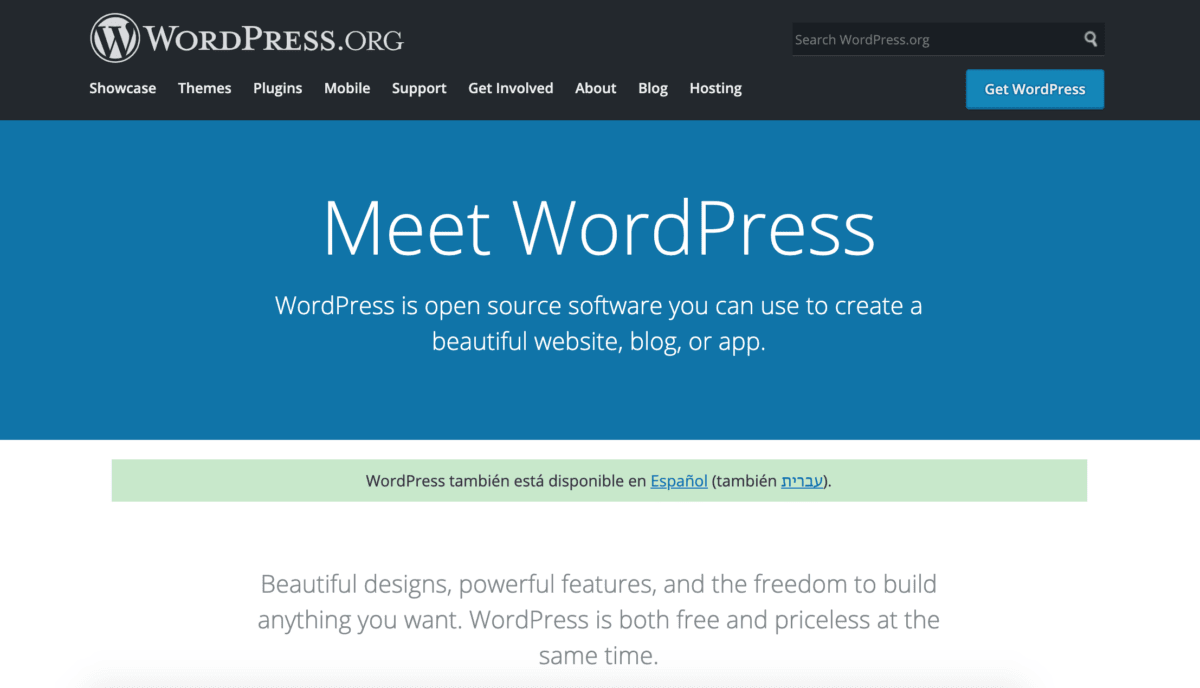

We always recommend to start building your website on wordpress.org and avoid using other platforms like Wix or Squarespace, because in the long run WordPress will be cheaper and easier to use as many other platforms have limited design flexibility. WordPress has countless templates and plugins, making it easier to customize your blog to fit your needs and preferences. WordPress might be overwhelming when you start out, but trust me it is worth the learning curve.
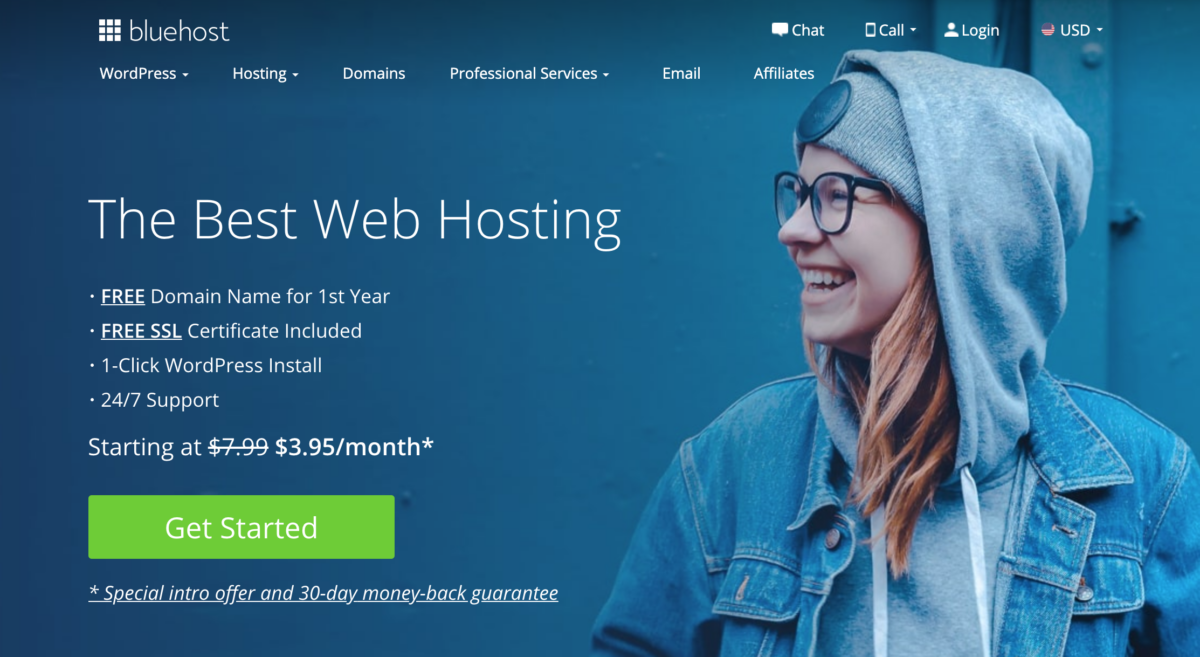

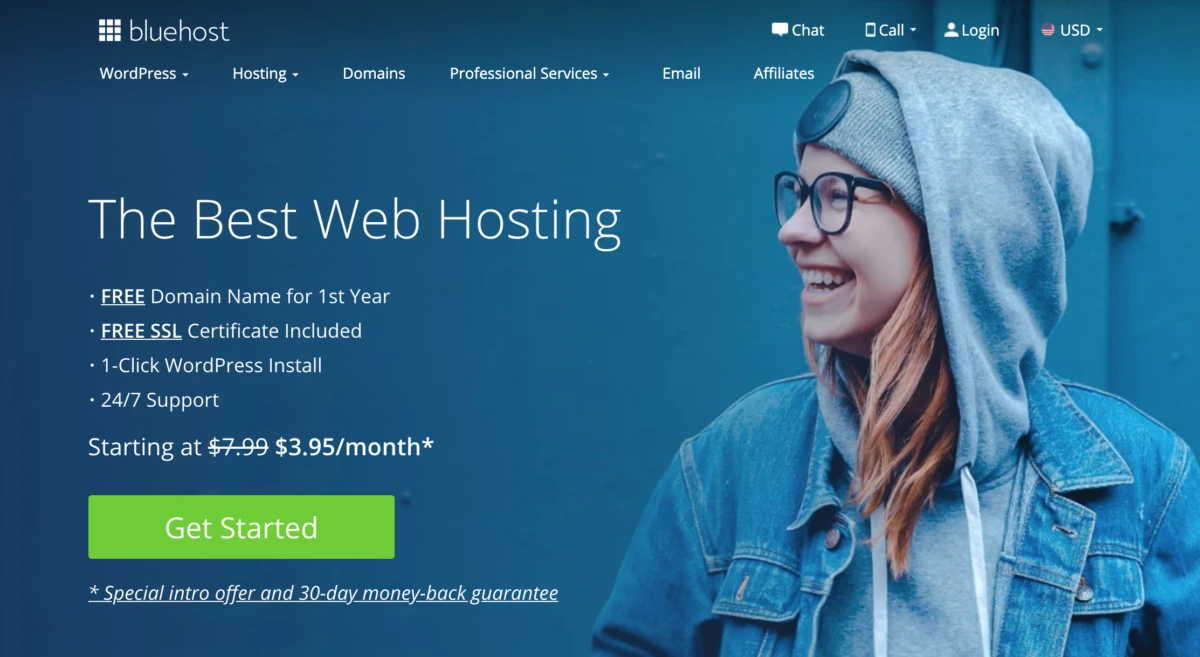

Once you have your hosting setup on Bluehost, they offer a one click installation of WordPress, where you will set up a username and password for WordPress and select an initial theme. Do not worry to much about getting the perfect theme during the setup process as it is easier to search and chose once you are in the WordPress dashboard. Bluehost will also ask you if your website is business or personal. I would go ahead and choose business, although I am not sure it makes a difference.
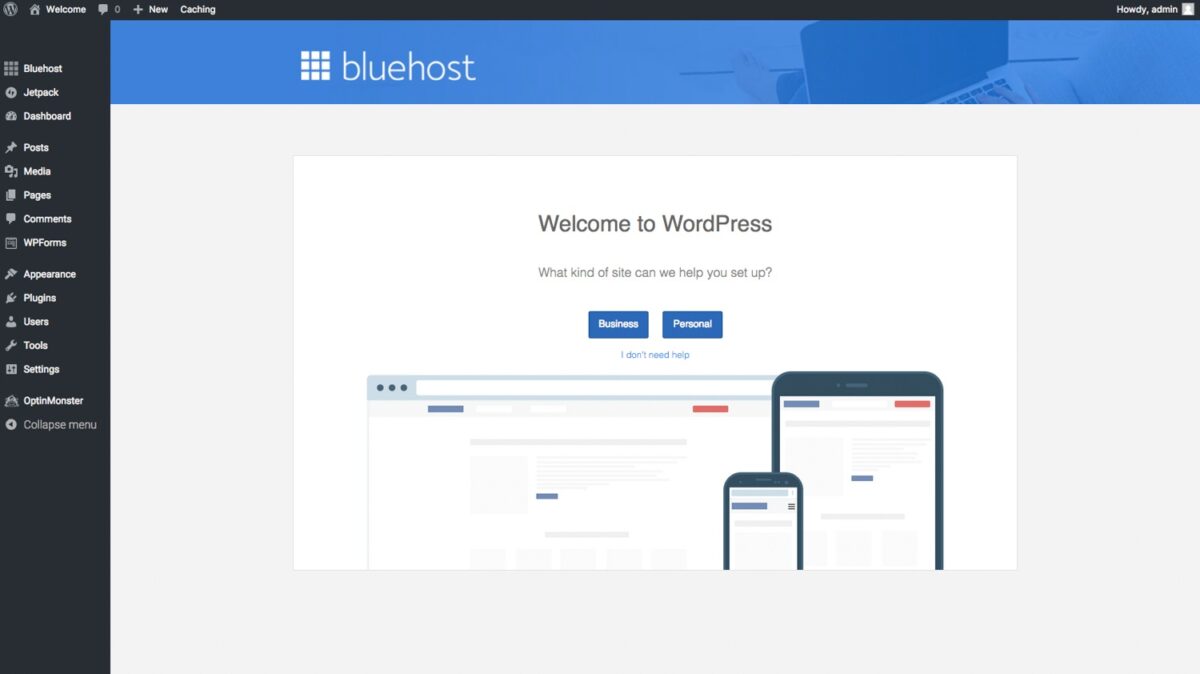

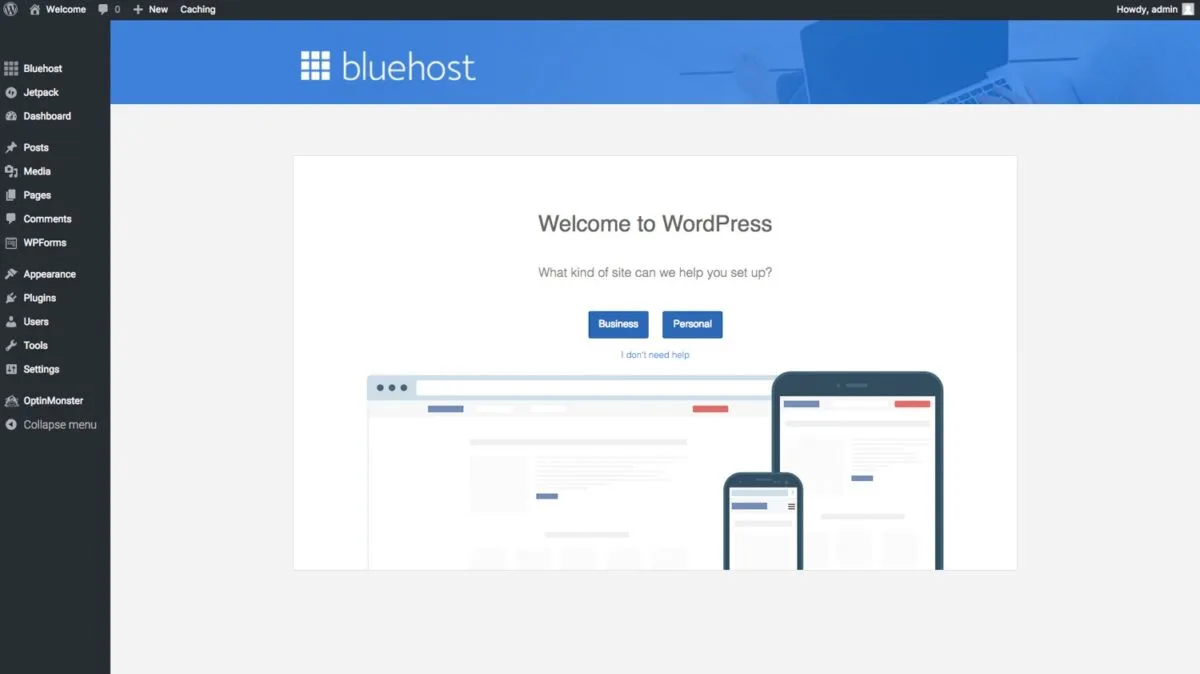

Then make sure to include your website’s name and description as the Tagline on the next screen. These can easily be edited later in the settings if you need to make it more SEO friendly.
Choose “A Static Welcome Page Here.” Whatever custom theme you choose later will determine the look of your site, but a static welcome page, like our home page is more easily customized.
The first thing you need to do is log in to WordPress on your website by typing http://yourname.com/wp-admin into your browser. Then enter your WordPress username and password. This should be different than the username and password you have for the Bluehost account.
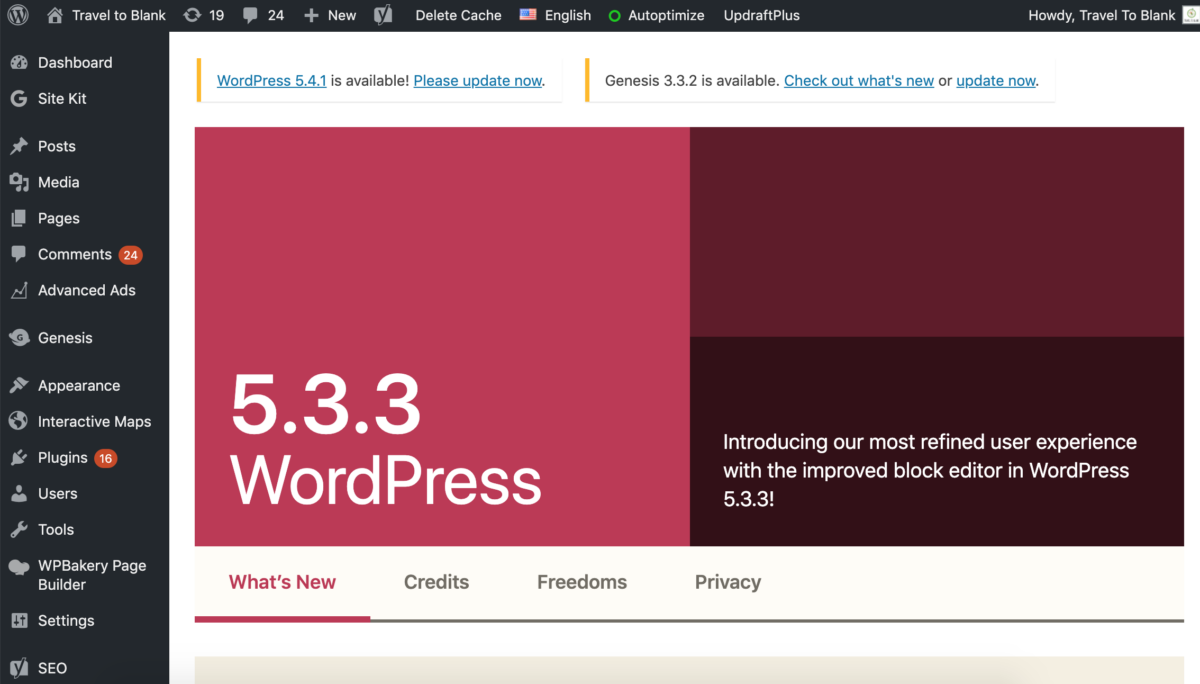

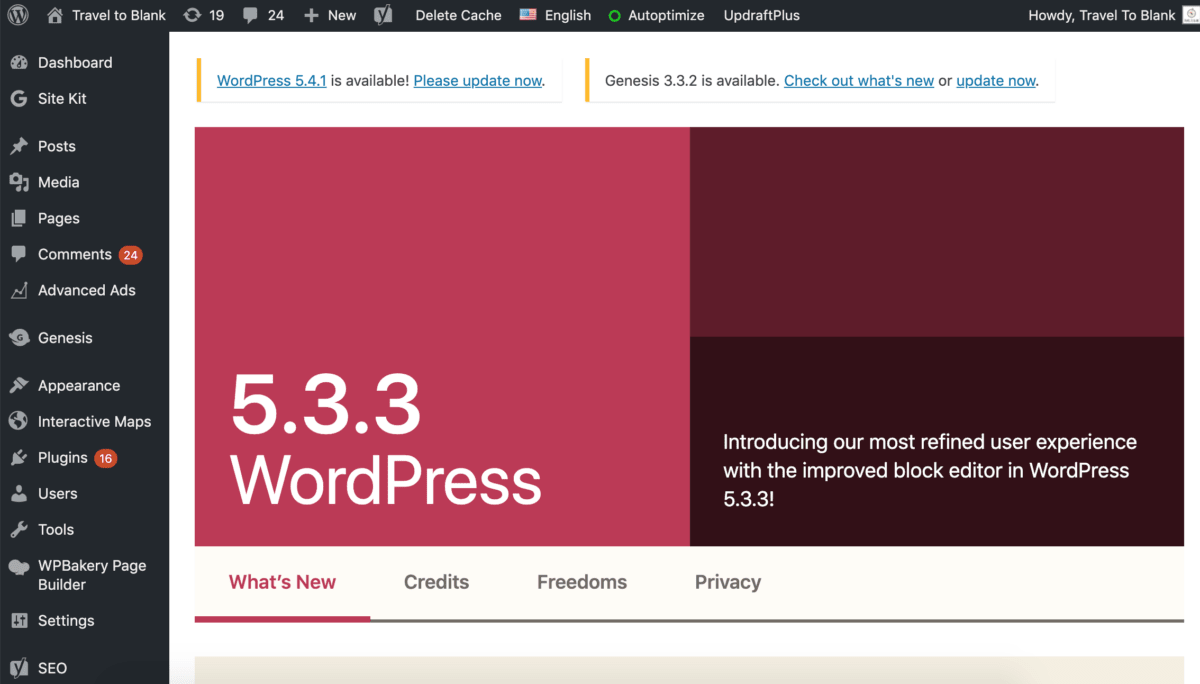

The WordPress dashboard has a menu on the left hand side where you can access the following:
- Posts: The place where you will write your entries.
- Pages: You can make the static pages on your site such as About Me, Contact and Home.
- Comments: Here you can approve, spam, or reply to comments on your blog posts
- Appearance: Here is where you can customize and edit your websites theme.
- Plugins: Install and update plugins (additional features) for your blog
- Settings: Alter your site settings, tagline, etc.
You can find different tutorials on WordPress for Beginners to get more familiar with WordPress in general.
Installing the essential plugins
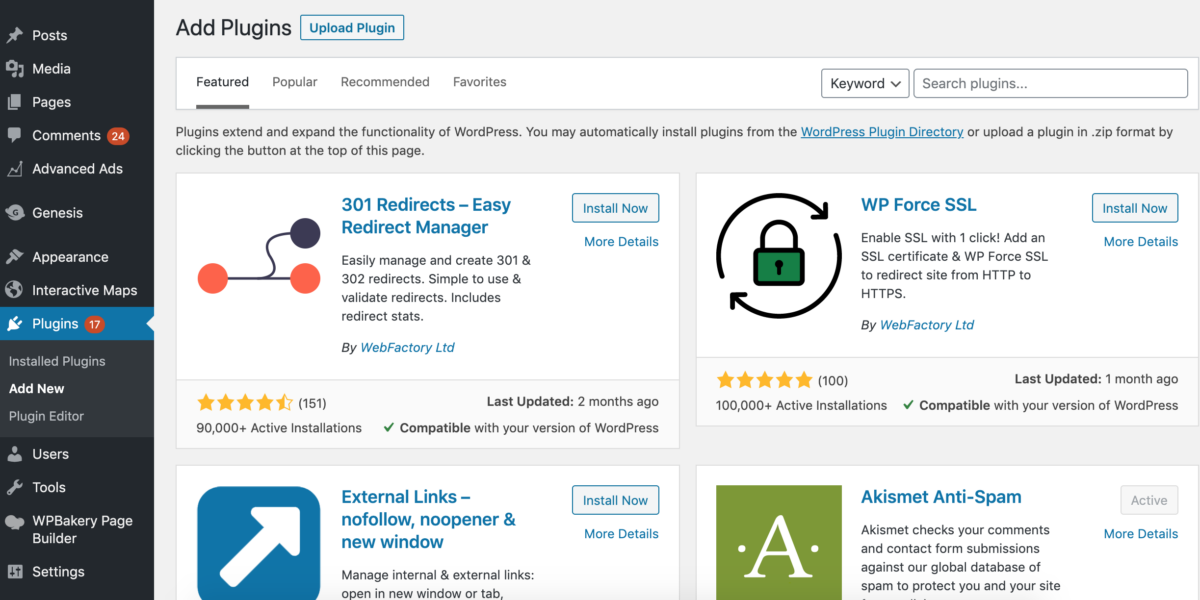

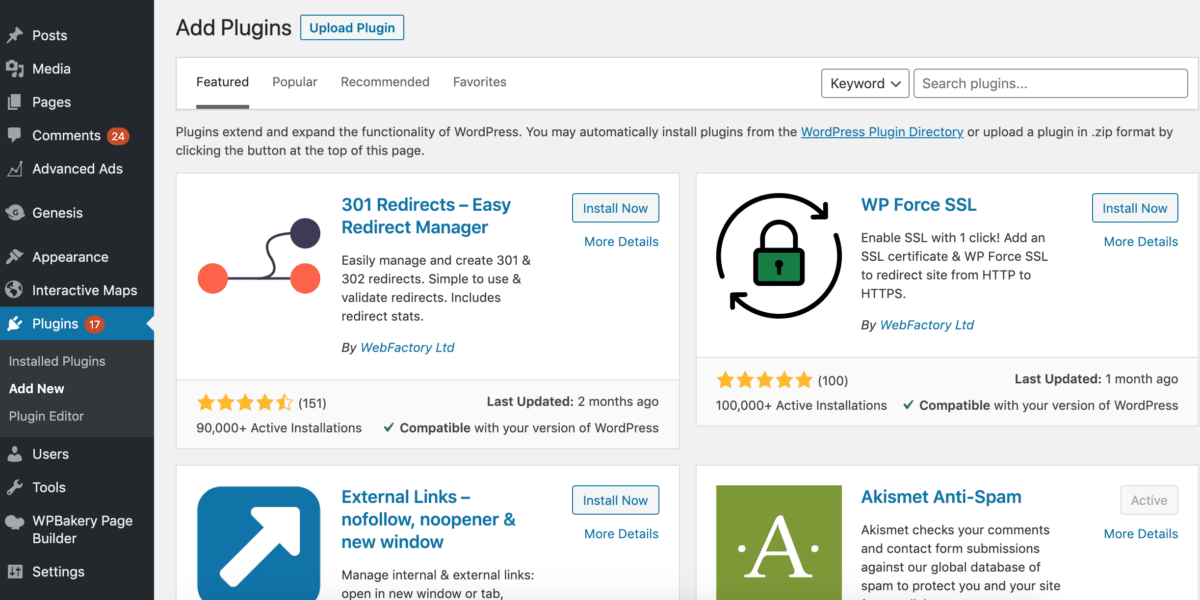

WordPress plugins allow for additional features that your theme might not have. To install plugins you must go to Dashboard – Plugins – Add new where you can .
Here is a list of the best plugins we have used previously and still use. There is no WordPress theme that does it all, so you might need to turn to plugins for customization with things like image sliders, social sharing icons, etc.
Free Plugins:
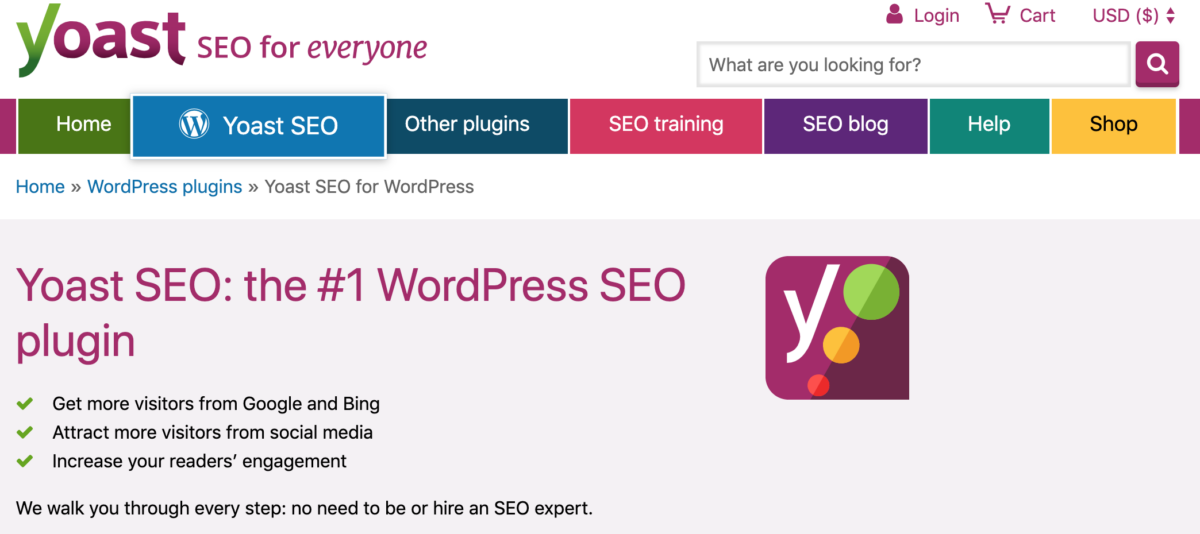

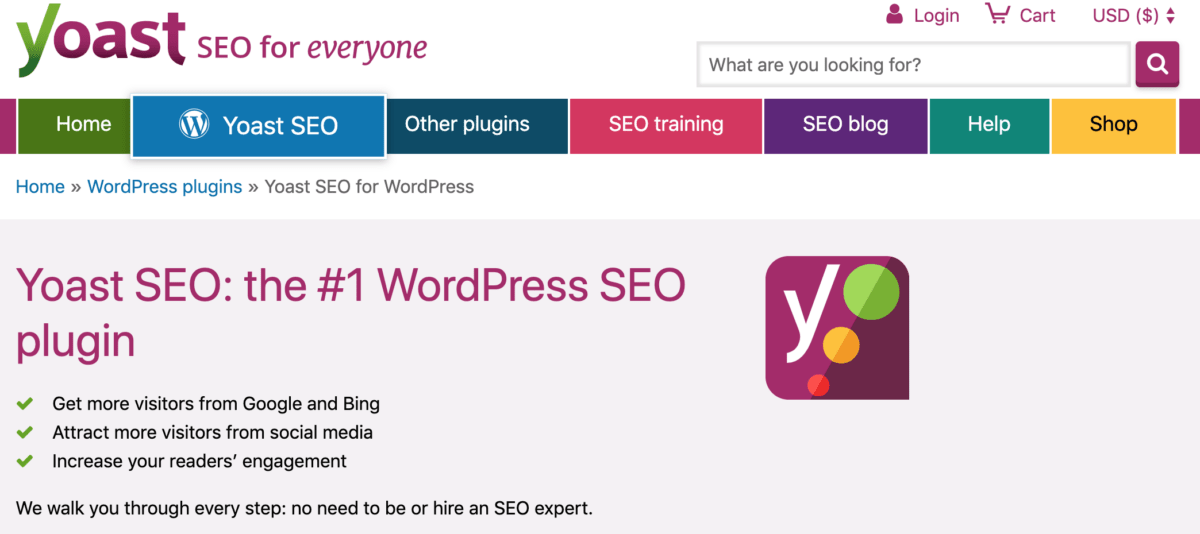

- Yoast SEO: Yoast SEO is one of my favorite plugins as it helps me see if each article is set up fully for the chance to rank well on search engines. It includes an SEO strength check to see if your text has enough keyword density for what you want to rank.
- Akismet: It is super important to have an active community so you do want to allow comments on your blog posts, but unfortunately you will also get spam comments. Akismet is really great at flags spam comments so you do not have wade through them when approving comments.
- Mailchimp for WordPress: It is never too early to start building an email list for newsletters. Mailchimp for WordPress integrates your Mailchimp account into your website so readers can easily sign up for a newsletter. Newsletters are a great way to bring existing readers back to the website and let them know of any exciting updates or giveaways.
- Grammarly: While Grammarly isn’t a WordPress plugin, They do offer a Chrome Extension that can save you from a lot of embarrassing typos. This extension will automatically highlight the mistakes and offer recommendations. It will proofread your blog drafts in WordPress, your emails, your social posts, etc. You can also write the content in a word document and copy/paste the text to the website and use the built in Word proofreader.
- Grow by Mediavine: There is no better way to promote your website than through your loyal readers. Grow by Mediavine allows for a range of social media share icons on all your posts so everyone can easily share your amazing content.
Paid Plugins:
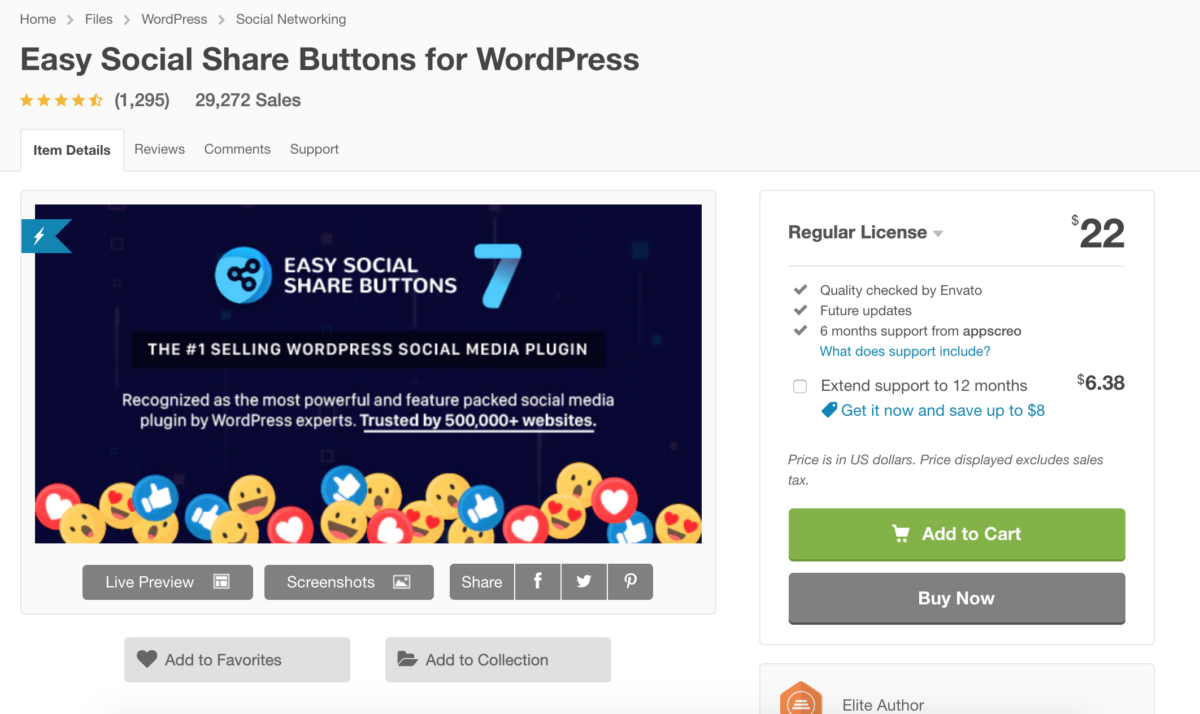

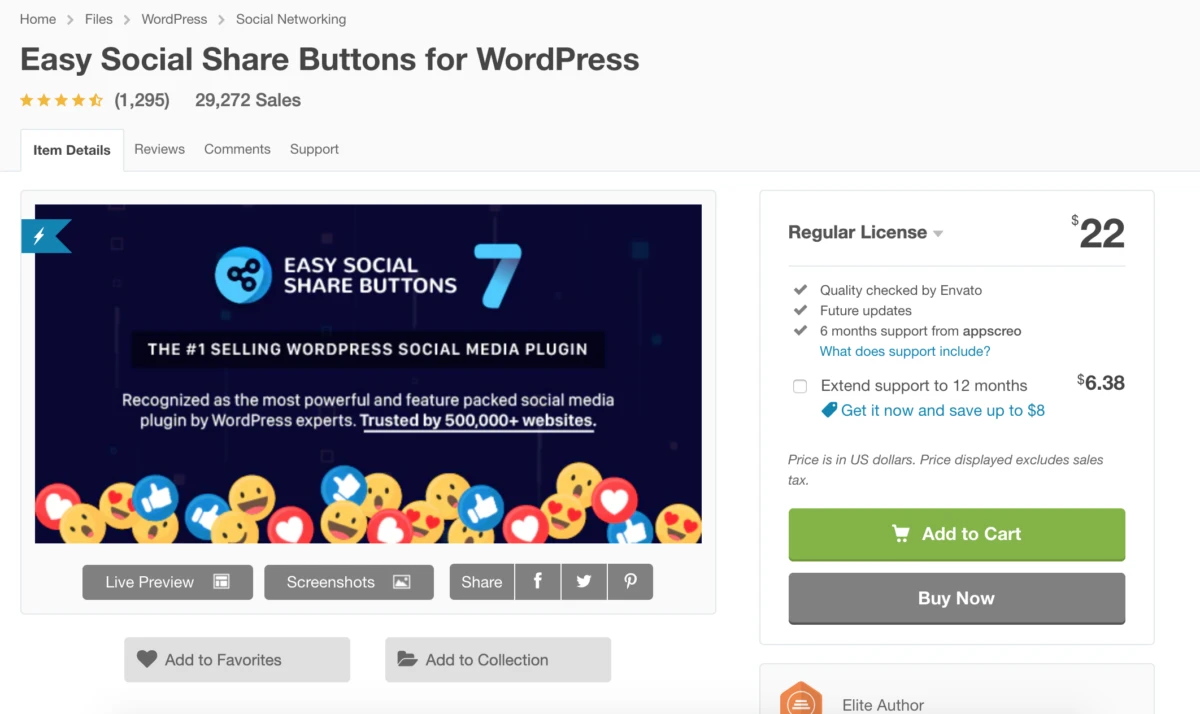

- Easy Social Share Buttons: ‘Easy Social Share Buttons’ plugin is great to help your audience share your content. It is key that people are able to share your content, especially on Pinterest.
- Interactive World Maps
- ShortPixel Image Optimizer: When you start to include multiple images in an article, your website can get really slow if the images are too large. ShortPixel Image Optimizer automatically reduces the size of images when you upload them to ensure optimum image quality versus size.
- Smash Balloon Instagram Feed: This is how we display our current Instagram feed on the bottom of our homepage. It is a great way to highlight your most recent photos on your site.
- Tasty Pins: This plugin helps you optimize your images for SEO, Pinterest, and screen readers. It is better to have your images set up properly from the first day than having to go back through thousands of images at a later date.
- WP Rocket: It is a speed optimization plugin that offers a variety of speed boosting options for a faster website experience. The faster your website loads, the more likely someone will spend time on it.
Install Google Analytics on your website
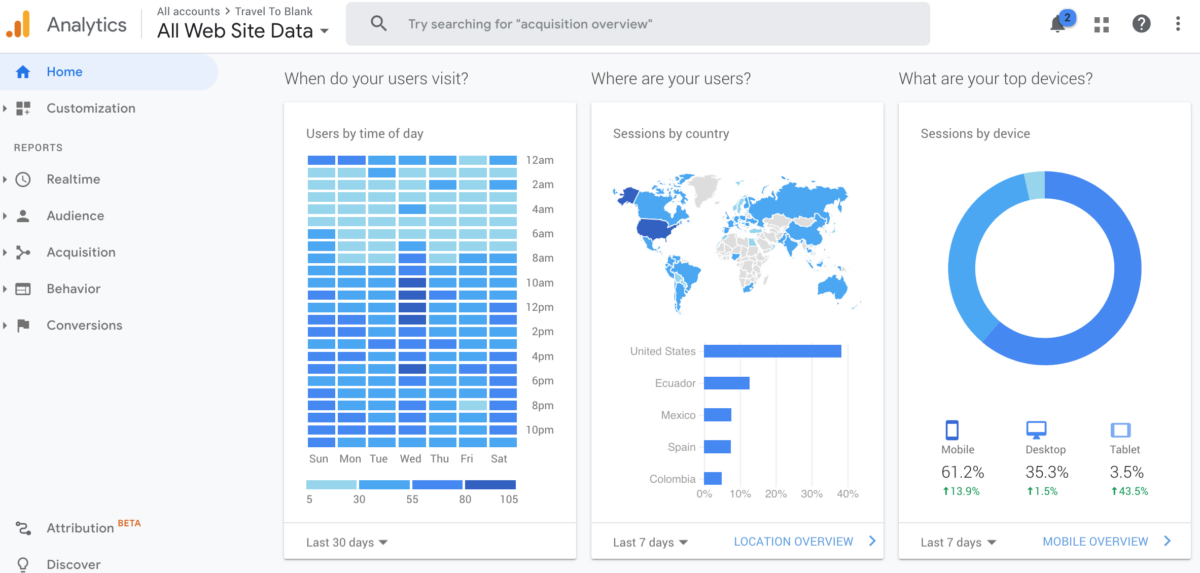

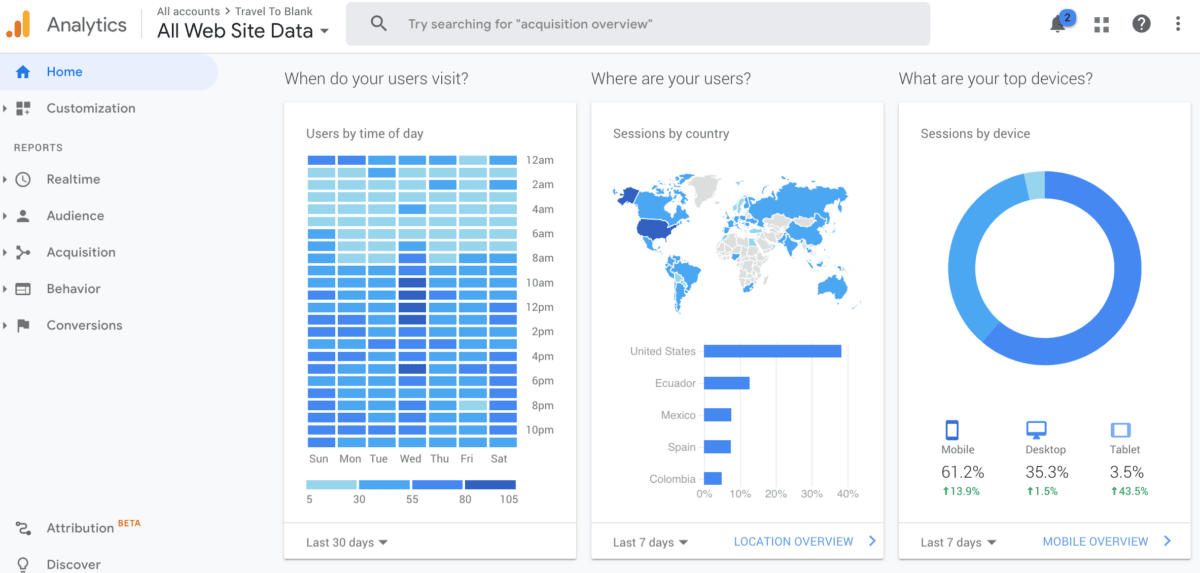

Google Analytics allows you to track your visitors, know how long they spend on your site and how they reached your site. All this information is super valuable for an in-depth look at your traffic and additional information about your readers.
The Google Analytics website gives step-by-step instructions on how to get started but if you need more information on how to install Google Analytics make sure to watch the tutorial.
Choosing the right layout for your blog
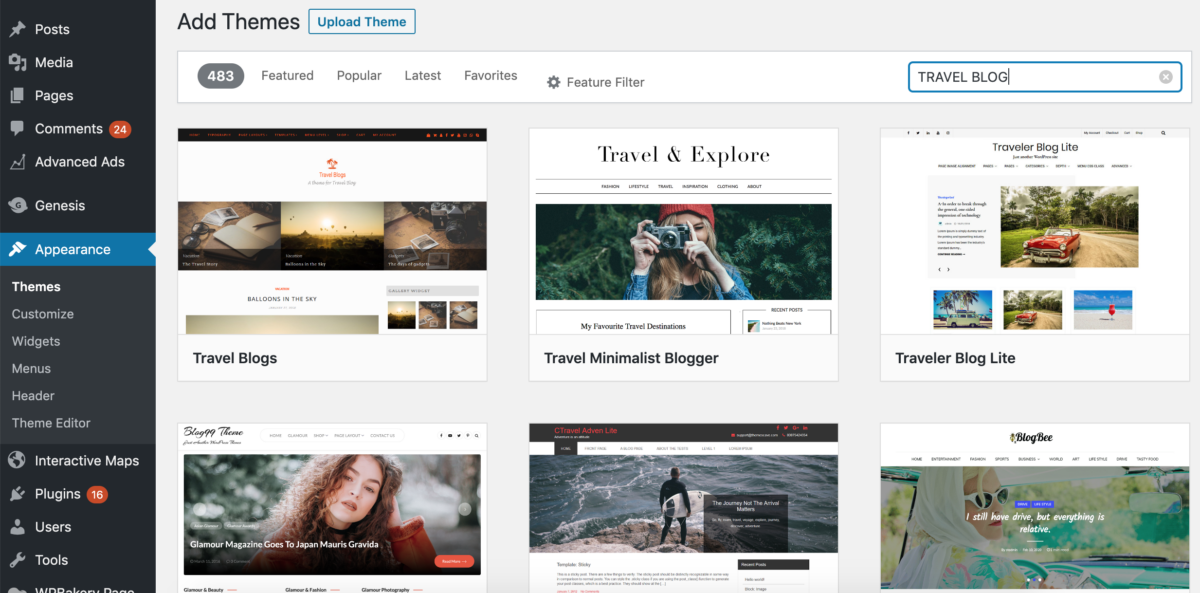

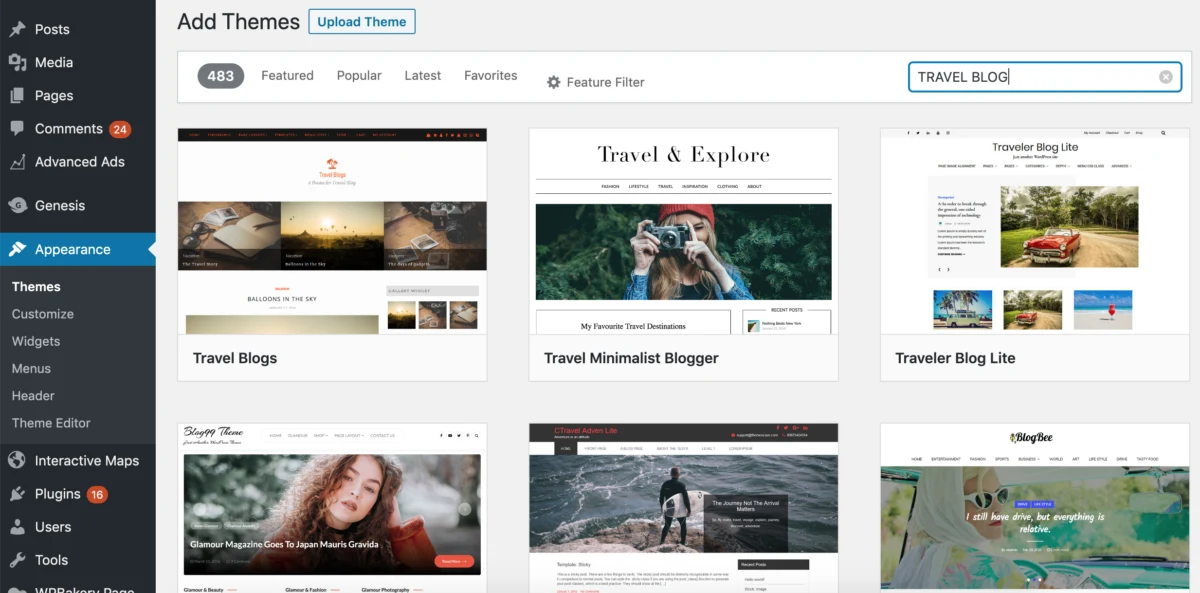

You can either create your own template by hiring a developer, buy a premium WordPress theme or use any of the free templates on WordPress. When you start searching for a blog theme make sure it has the features and design that you think are important for your website. A theme is easy to install via the installation guide included and edits to colors and positions of many elements can be adjusted afterward.
Picking your website theme allows you to choose the page layouts, colors, formatting, and even fonts that your website will have out of the box. Of course, you can switch and customize the theme with basic HTML and CSS but try to keep it simple as you want your website to load as fast as possible. My advice after spending so many days and hours making in my opinion my perfect website, I learned that less is better. Keep your website simple without losing your brand. Stay authentic, commit to the concept, and be consistent.
Where can you find the perfect wordpress theme?
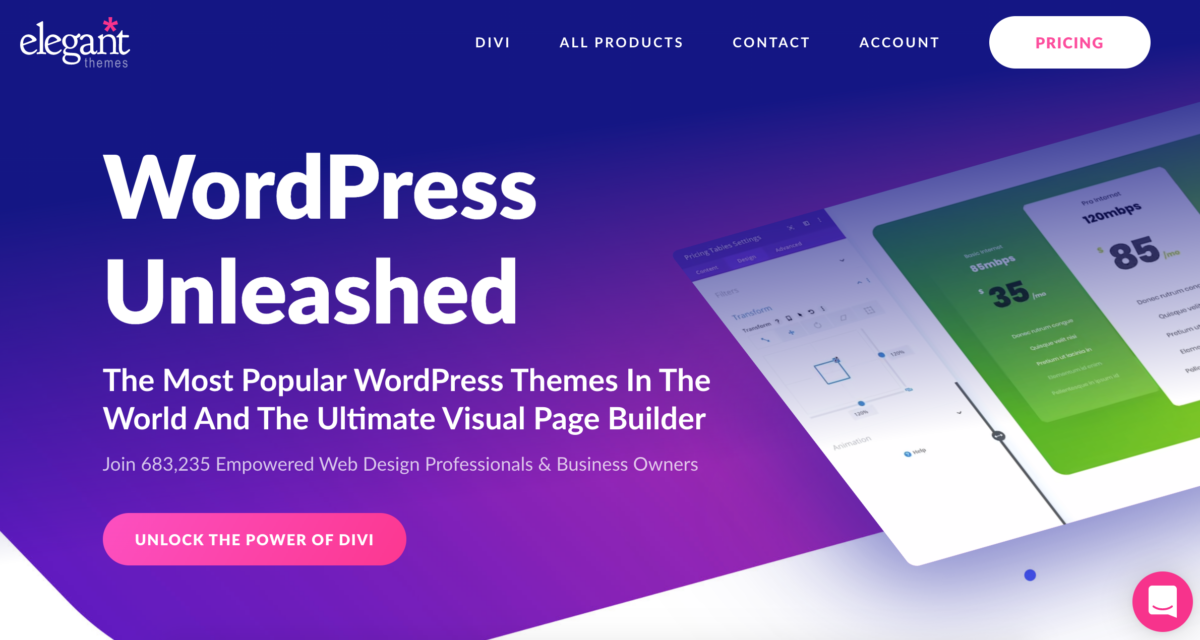

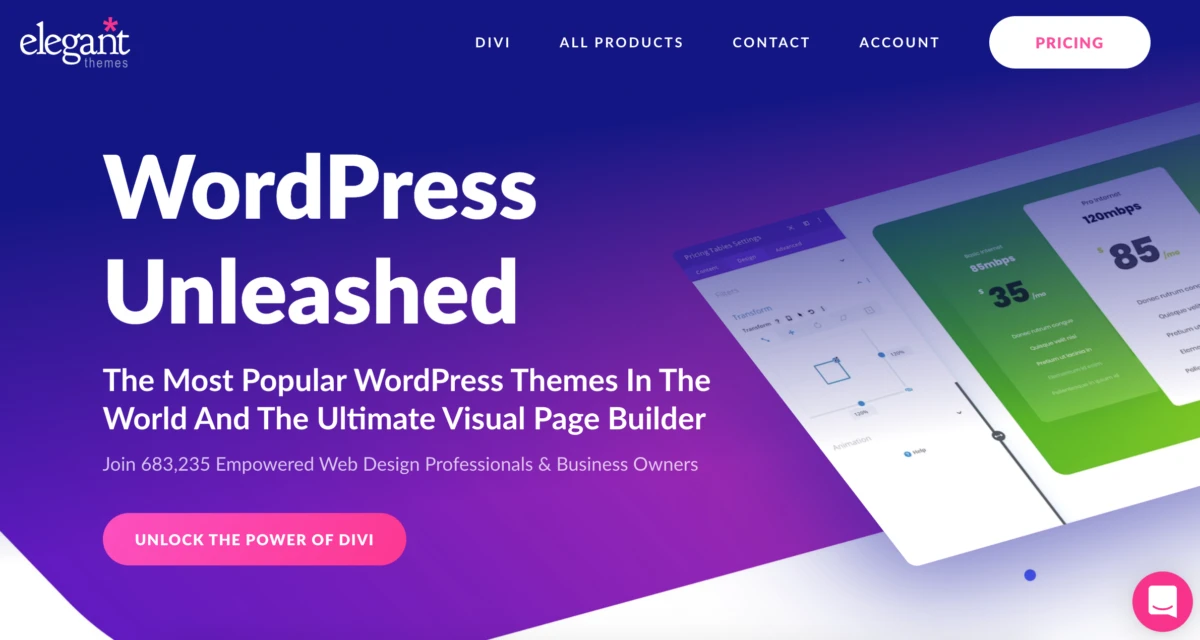

- Creative Market has a ton of beautiful themes by professional designers with plenty of reviews before purchasing.
- Envato (formerly known as ThemeForest) is one the largest, high-quality marketplaces of WordPress Themes that I’ve seen. I built my old website with the Avada theme, the #1 rated theme on the platform.
- Elegant Themes is also an excellent resource for creative and unique themes.
- WordPress offers many free and lite versions of paid themes. It is a great way to test out a theme on your website before jumping into the paid version.
If you choose to buy a theme mind that they can range in price between $30-$100+ depending on what you are looking to buy. Even though there are free themes for WordPress, it is very valuable to invest in a premium theme to keep your website fast and allow for easy customization. Either way make sure the theme is mobile responsive and has active support, either through a community forum or by the developer.
Installing your theme on WordPress
Themes will usually include installation instructions, but these are likely the steps you’ll need to take to install a theme on WordPress:
- Downloaded the .zip file (don’t unzip the file)
- Login to WordPress
- Click on Appearance > Themes > Upload
- Upload the .zip file you’ve just downloaded, then follow your theme’s instructions for customization.
User Experience




Now that you have your theme installed is time yo make sure that your website is user-friendly. What we normally do is research on other bloggers and see what they have in the menu, what information they display and how they show that information. It is important to organize your information in the best possible way.
- Set Up Your Menu Bar: The most important things to set up first is your menu bar so your readers can easily access information. In your Dashboard, click on Appearance > Menus to customize. It’s helpful to research a tutorial on customizing your menu because it can be confusing, especially if your theme has multiple menus!
- Map Out the Layout of Your Homepage: I find it super helpful to draw the design of a homepage on paper with mock content boxes (that are available within the theme). Then, when everything makes sense, build it out. Remember it might to be possible to build exactly what you drew out within a theme, so use it as inspiration rather than a set in stone idea.
Creating content for your blog




Start off by creating a page where you tell your story to your future readers. Share your story and a little information about you and what type of content you will be writing. People are always curious and want to get to know you better. To create a new page go to the dashboard then Pages and then add new page.
The difference between a page and a post is that a page is a static piece of content that lives separate from the blog. A post appears in your blog feed and comes up with the search tool. At the end of the end of the day, your “pages” are benchmark “higher level” pieces of content that are the framing of the website. Your blog posts are the articles that you share.
- About Me Page: One of the first things most users will click is your About page. Make it easy for readers to learn more about you and your expertise. Make it clear what they will get from your site.
- Contact Page: Create a page so that people can reach out! Share the links to your social media accounts along with a way to contact you. If you are not comfortable sharing an email address directly, use a contact form to sift through any potential spam you may receive.
Then it is time to write an entry, your first article! It can be about anything, but keep it within your niche, especially to start out . We recommend to write between 700 to 2,000 words per article and to always use images and headers. This will make it more readable and complete, with a better chance to rank higher on search engines.
Before you start writing, get familiar with up to date SEO tactics and conducting keyword research. Resist the urge to figure out out as you go. Do not waste your time later on optimizing existing posts, do it now. Remember that you want people to be able to find your content on Google.
Spread the word about your blog
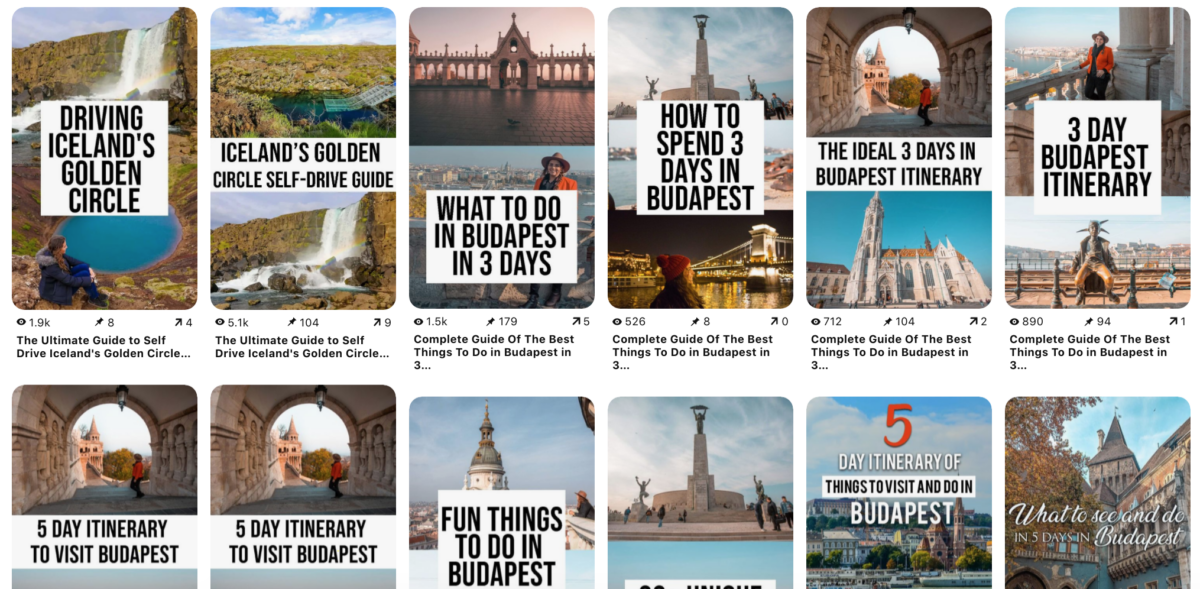

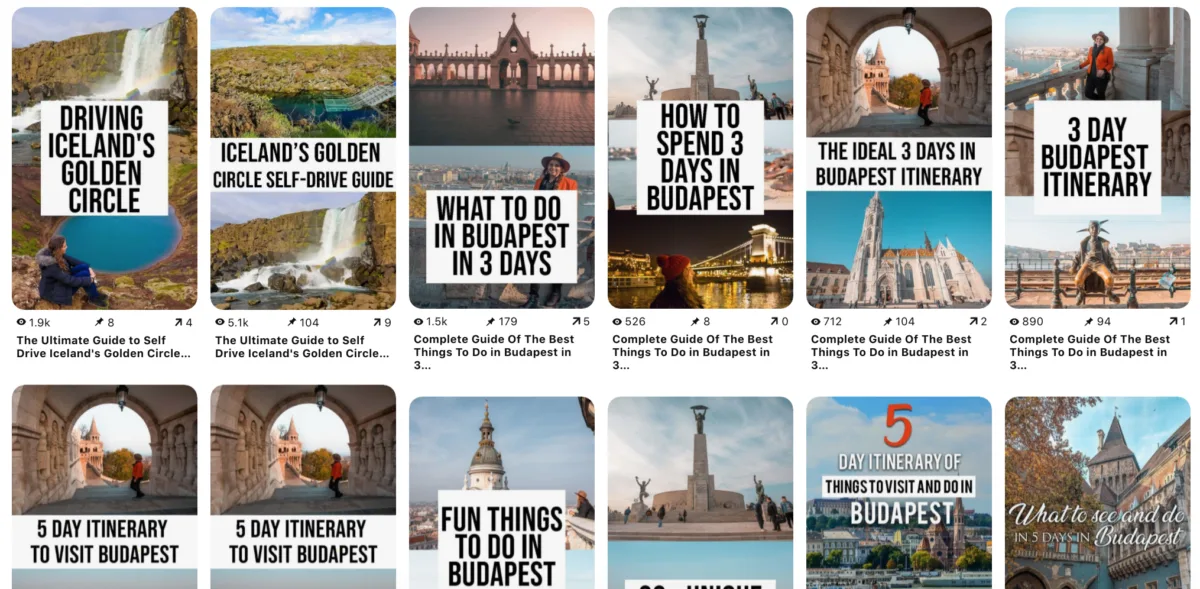

The hardest thing about having a blog is not creating the content but having people interested in the topic being able to find it. It can take weeks or months for you to have an active community and daily readers, but with these following tips you can start driving traffic to your website sooner rather than later.
- Organic Search: Search Engines are the best ways to generate traffic. Yet, in reality is very difficult to become number one for a Google Search result. For that you will need to apply all the SEO tactics and keep the information in your articles as up to date as possible. SEO stands for Search Engine Optimization, and it means getting readers to your website by through the keywords they search. It is key to improve and update your articles as often as your niche requires. The longer the article is, the more relevant information it can have and Google will place a higher value to it.
- Submit your blog’s sitemap to Google: The Yoast SEO plugin creates a sitemap for you, which is basically a big list that includes all the pages and articles on your blog. Read more on How to submit a Sitemap.
- Facebook traffic: There are several things you can do to spread your articles on Facebook and one of the best tools are Facebook groups. There are countless groups in every niche with thousands of members searching for answers you have on your website. Make sure to read the rules of each group before posting a link as some have strict rules. You can also create your own Facebook group to start building a community. A good way to share your content to your existing community is by sharing it on your personal Facebook profile.
- Pinterest traffic: Many people consider Pinterest a social media platform but in reality it is a search engine with millions of users who are trying to find answers in a visual format. Start by signing up and creating images with your articles titles and eye catching images.
- Instagram traffic: Try to post a daily story linking to your blog posts. From time to time also share a caption on your photos inviting your followers read to your articles.
How to create impactful Pinterest pins?
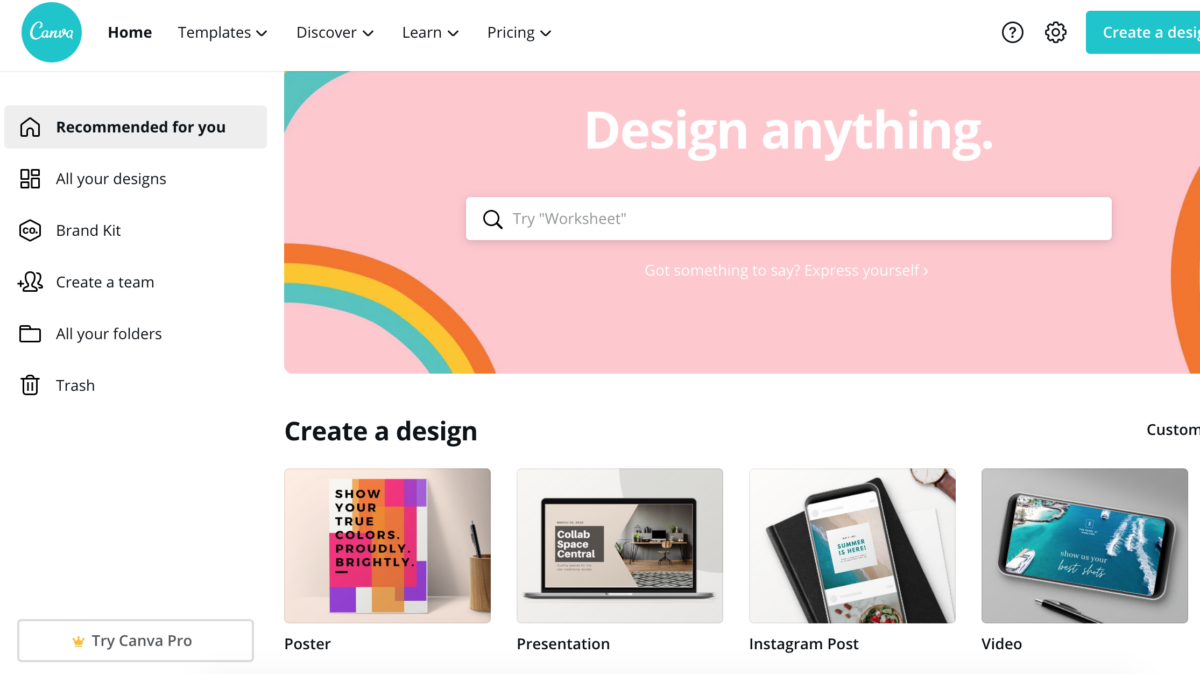

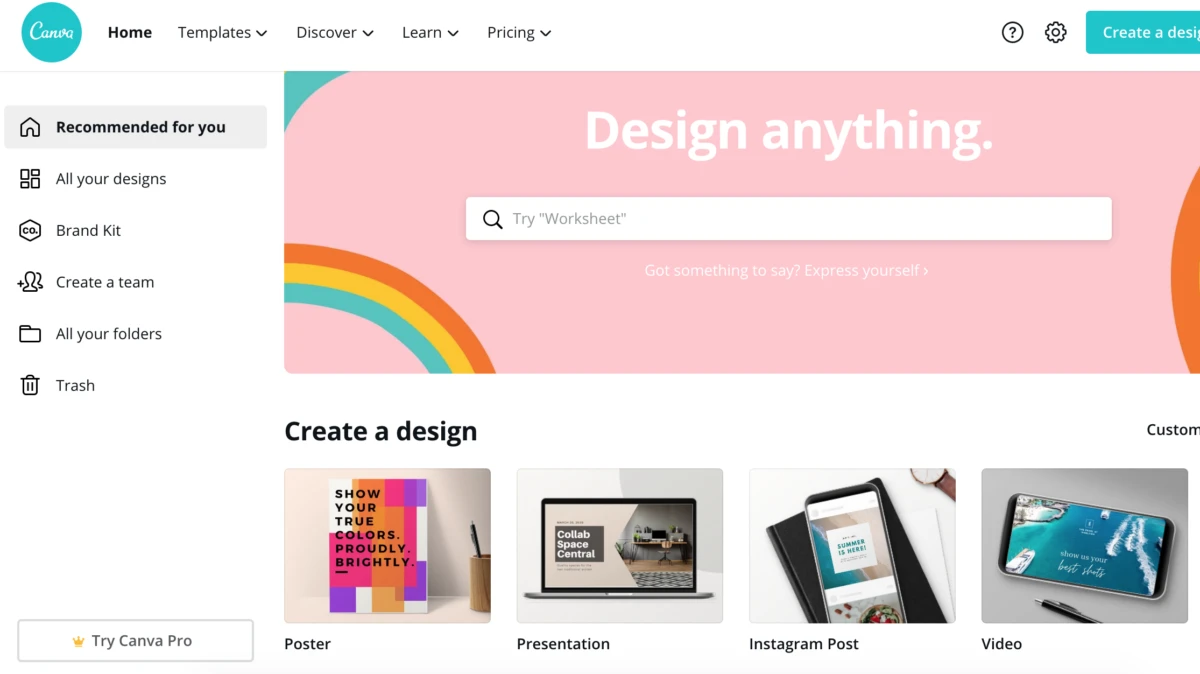

- Unsplash: For beautiful, high-resolution, royalty free images.
- Adobe Suite for Photographers: I use Adobe Photoshop and Lightroom Classic to design Pinterest pins, sidebar graphics and edit my photos.
- Canva: An awesome and free resource to create custom graphics.
- Pixabay, Pexels or Freepik: offer royalty free images and vectors.
Monetize your blog




Here comes the most important thing about blogging, how to monetize your blog? There are several ways how you can make money from your blog. Some of the most popular income streams are affiliate marketing, selling products and services or ads on your site.
- Affiliate marketing: Affiliate Marketing is the best way to start earning money with your blog. When someone clicks on link to one of your affiliate partners and makes a booking or a purchase, you will receive a commission for that sale. Depending on the site you can earn a set price or percent of the sale.
- Google Adsense or Mediavine: Placing ads on your website will help you make a steady income, it all depends on your audience and your traffic. Google Adsense is the most common platform and is easy to integrate, while Mediavine has a minimum requirement of at least 25,000 monthly readers to sign up.
- Newsletter: Setting up a mailing list can give your blog many extra visitors each month. More visitors equals more income via affiliate links and ads. Add a MailChimp form in your articles, in a popup or at the end of your website where you ask readers to subscribe to stay updated with your blogs.
- Sell a product or a service: What are you good at? What can you do what many others wished they could. Offer this as a product on Sellfy. It can be everything. For instance, a video course, a self-written e-book, tutorials, photo presets, etc. Everything can be for sale as long as it is downloadable.
I hope all these tips will help you succeed on the start of your blogging career, Good luck!
Please ask any questions about blogging you may still have in the questions below and let us know what tips helped you as a new blogger.
Sharing is caring!

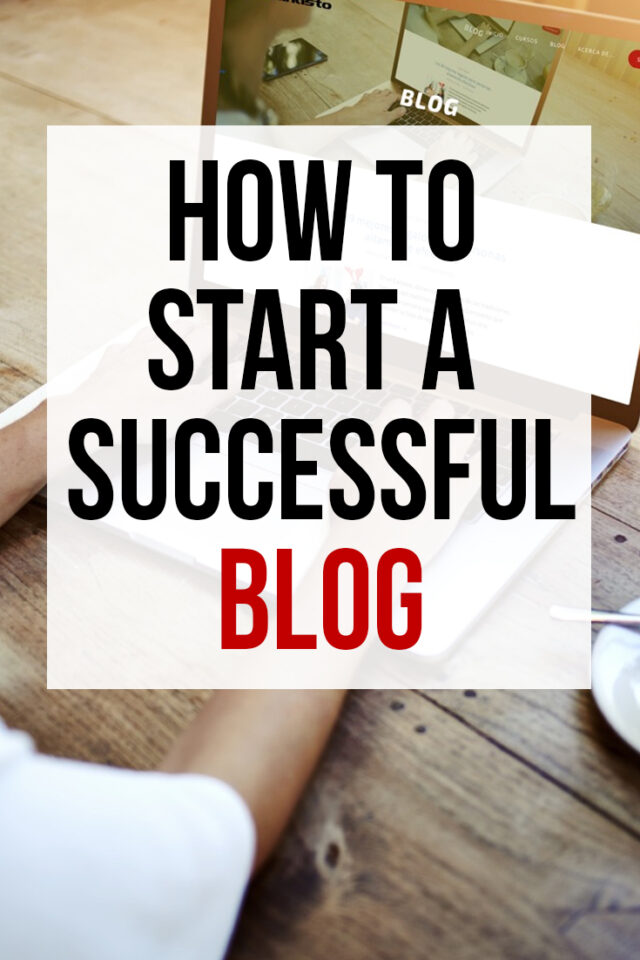
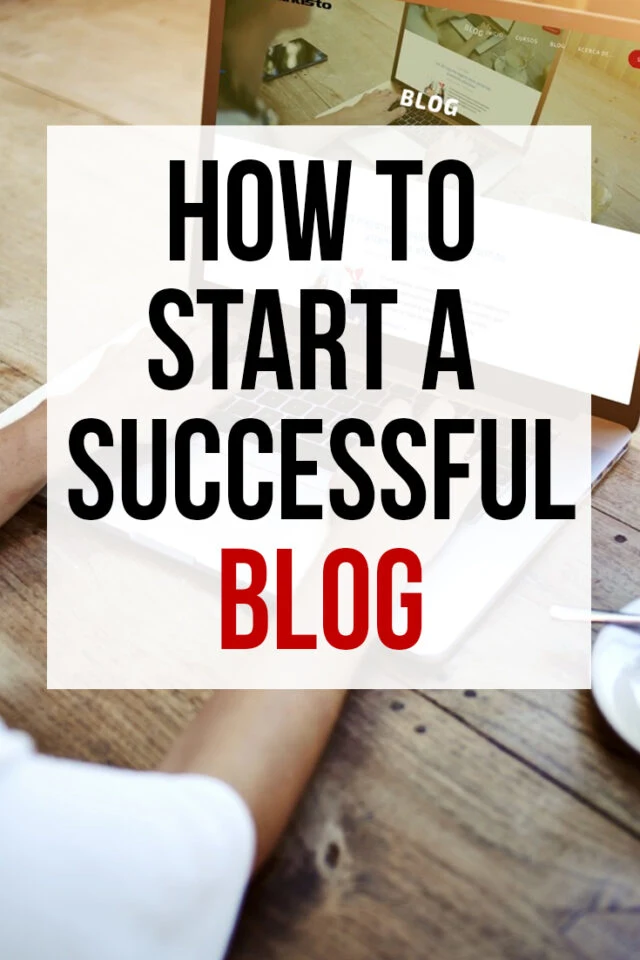


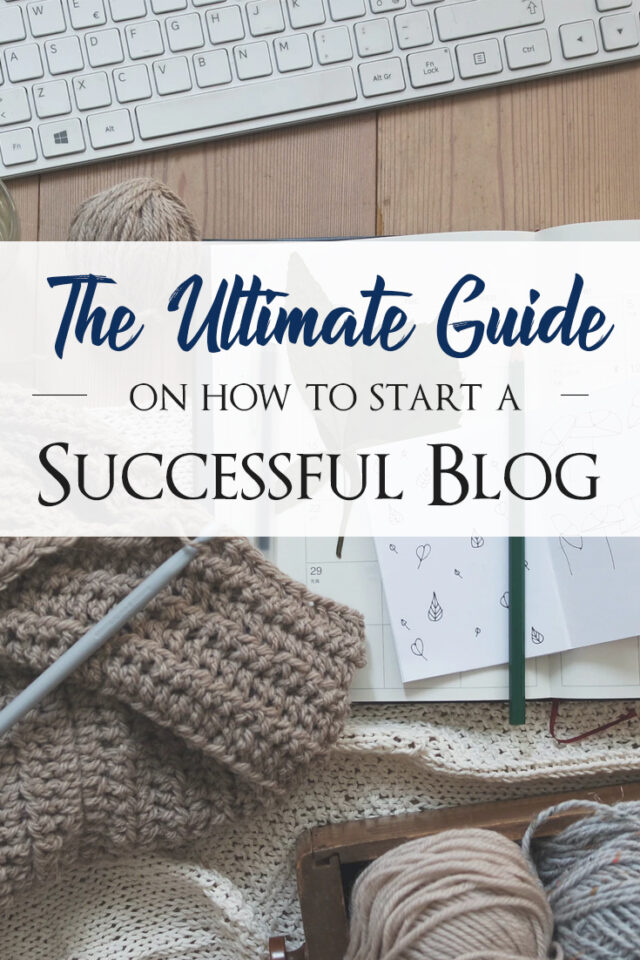
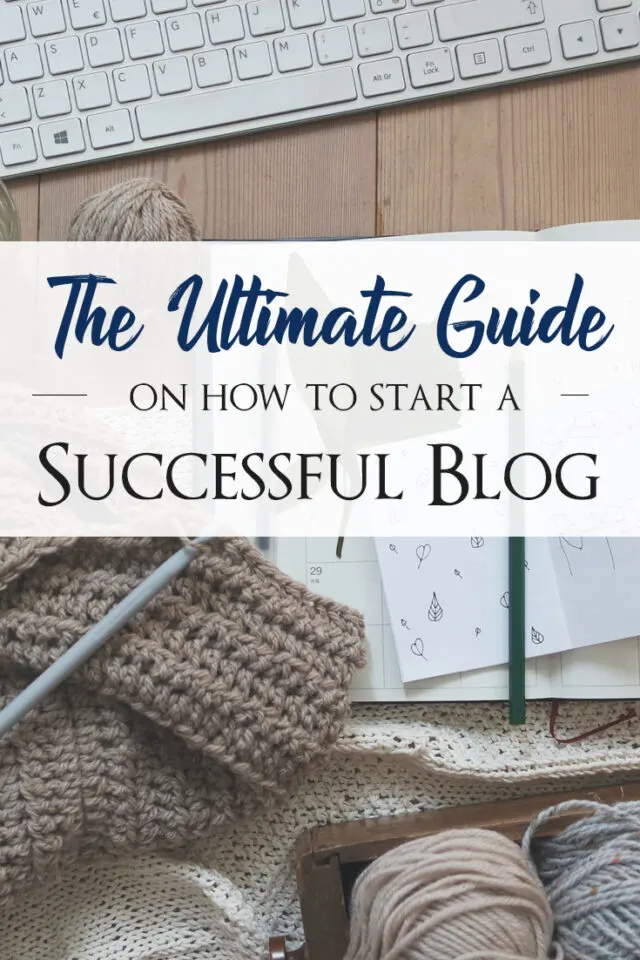
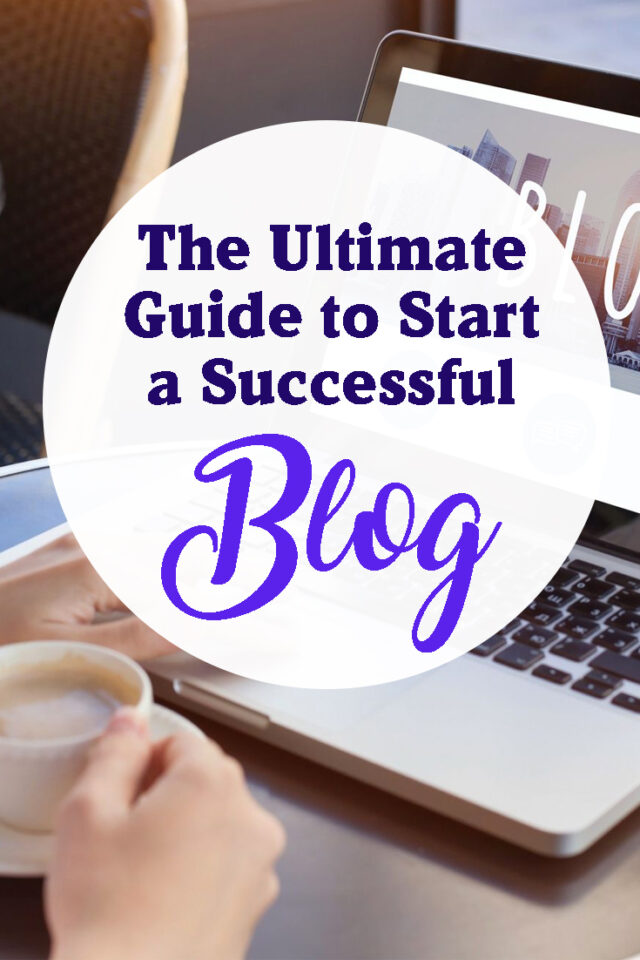
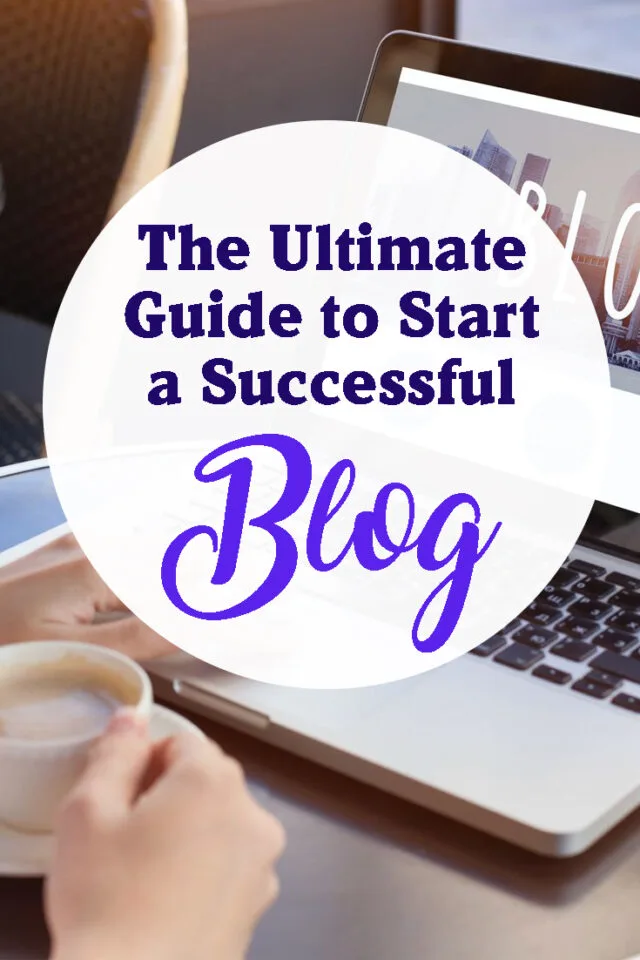
Kate
Tuesday 30th of June 2020
I am so excited about this post! I'm planning to come back to at I create more content. Thanks so much for all of your insights!
Travel To Blank
Thursday 2nd of July 2020
Please let us know if you have any questions as you are improving your site!